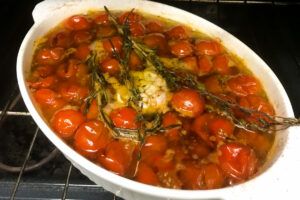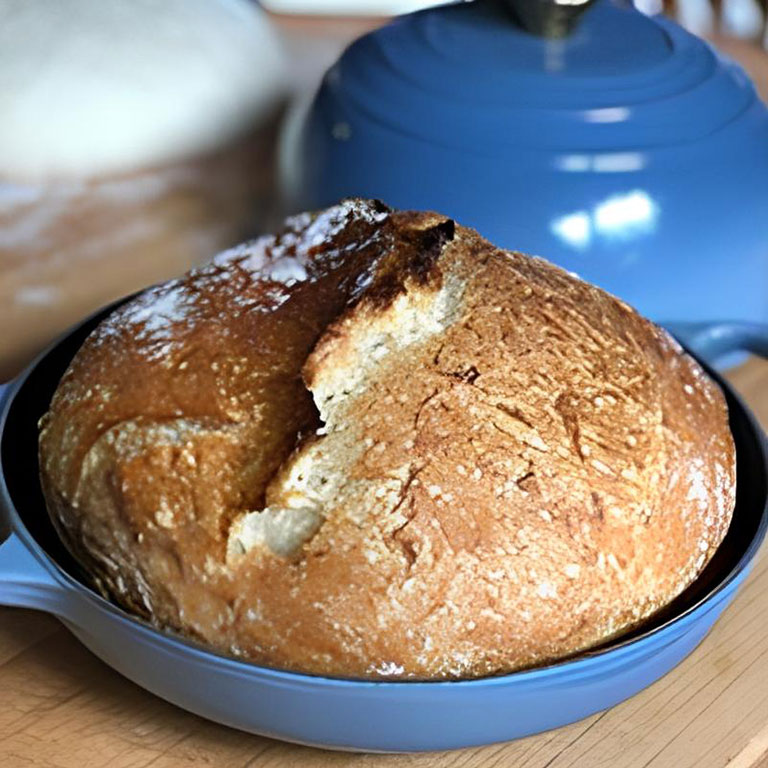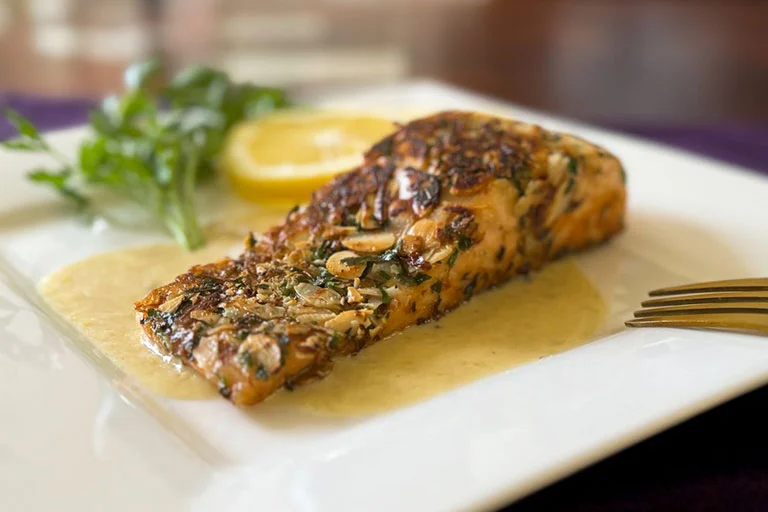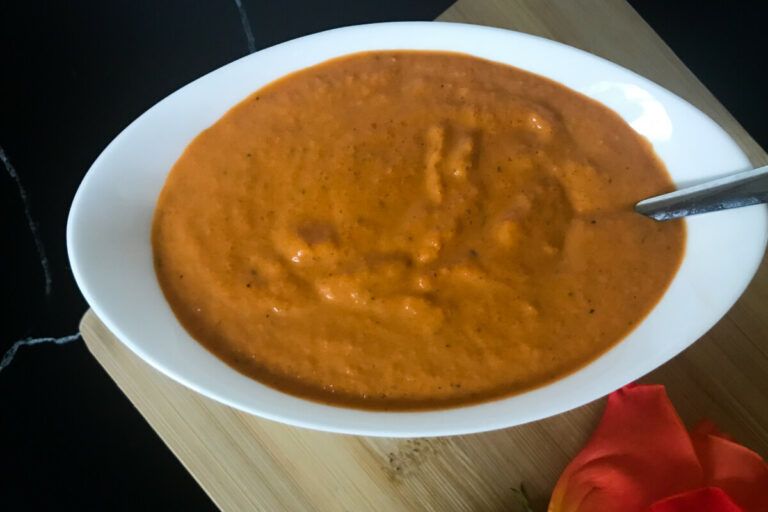
My Curated Tastes is reader-supported. When you buy through links on our site, we may earn an affiliate commission at no extra cost to you. As an Amazon Associate I earn from qualifying purchases.
Rancheros Salsa and Sauce: The Ultimate Guide
Zesty, spicy, tangy, and fresh – these are the hallmarks of authentic rancheros salsa and sauce that bring Mexican and Tex-Mex dishes to life. Whether you’re planning to make my Chrisy’s huevos rancheros recipe for breakfast, looking for the perfect topping for tacos, or simply want a flavorful dip for your tortilla chips, this versatile condiment is an essential addition to your culinary repertoire.
What is Rancheros Sauce?
Ranchero sauce (also called salsa ranchera) is a vibrant tomato-based sauce that originated in Northern Mexico. While it shares common ingredients with enchilada sauce and salsa roja—such as tomatoes, chiles, and garlic—ranchero sauce has distinct characteristics that set it apart:
- It contains fresh hot chiles like jalapeños for a bright kick of heat
- It’s always a cooked sauce, not a fresh salsa made of raw ingredients
- It has a rich, smoky flavor profile from roasted ingredients
- It can be prepared with varying levels of texture, from chunky salsa to smooth sauce like this recipe
The authentic salsa ranchera typically has some texture for that juicy bite that pairs perfectly with traditional rice dishes. However, it can also be blended until smooth for a more sauce-like consistency, often referred to as ranchero sauce, which works wonderfully for dishes like huevos rancheros and enchiladas.

Key Ingredients for Authentic Rancheros Salsa
Here’s the exact ingredient list for a delicious rancheros salsa:
- 1 Tbsp. Olive oil – Adds richness and helps bloom the flavors when sautéing the aromatics
- 1 Medium yellow onion, chopped – Provides a sweet aromatic foundation for the sauce
- 1 Jalapeño pepper, seeds and veins removed, chopped – Delivers that characteristic heat that can be adjusted based on preference
- 4 Cloves Garlic, chopped – Offers pungent depth that mellows as it cooks
- 14.5 Oz. Can diced tomatoes – Forms the base of the sauce with tangy acidity
- 12 Oz. Roasted bell peppers, drained and chopped – Adds sweetness and smoky undertones
- 1 Cup Chicken broth – Creates the perfect consistency while adding savory notes
- 1 Tsp. Guajillo powder – Contributes earthy, slightly tangy flavor with mild heat
- 1 Tsp. Chipotle powder – Gives smoky, medium heat that’s characteristic of authentic ranchero sauce
- 1 Tsp. Mexican oregano – Offers citrusy, earthy notes different from regular oregano
- 1 Tsp. Cumin – Provides warm, earthy undertones that balance the acidity
- 2 Tbsp. Brown sugar – Balances acidity with subtle sweetness
- ¼ Tsp. Liquid Smoke – Enhances the traditional fire-roasted flavor
- 1/2 – 1 Cup Heavy cream – Optional for a creamier, richer sauce variation
- Salt and pepper to taste – Enhances all other flavors in the sauce
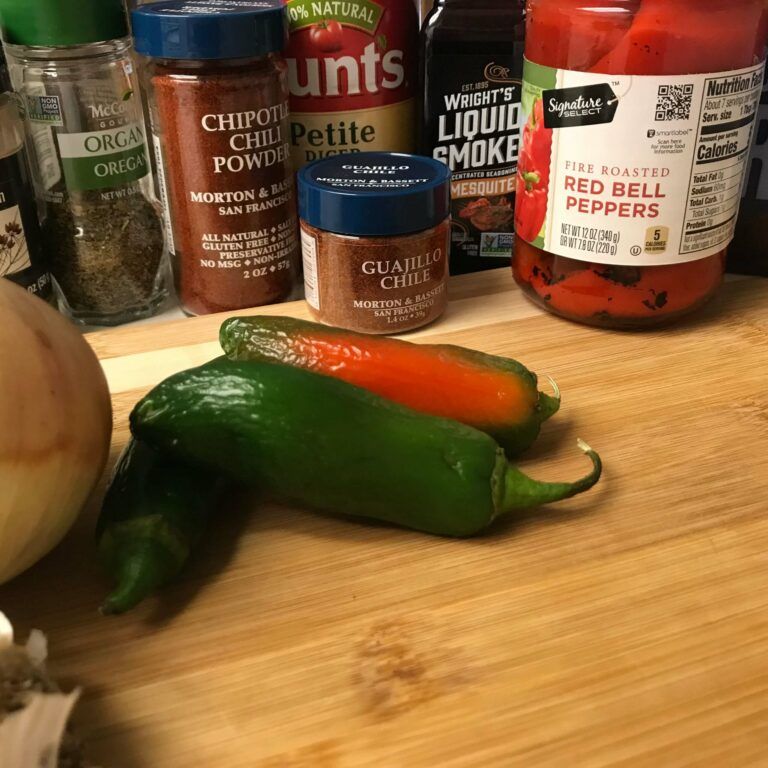
Ingredient Notes and Variations
When preparing rancheros salsa or sauce, consider these helpful tips:
Tomatoes
Roma or round tomatoes work best for this recipe. Choose the ripest, softest tomatoes you have, especially if they’re nearing the end of their shelf life—they’ll roast beautifully and prevent food waste. If using canned tomatoes, opt for unsalted varieties for better flavor control. I’ve gone with canned tomatoes for a much easier recipe.
Heat Level
Jalapeños provide moderate heat, but if you prefer a spicier sauce, serrano peppers make an excellent substitute or addition. For bold spice, incorporate dried and toasted chiles (chile seco or chile tostado), particularly chile de árbol or chile japones. Toasting them allows them to break down easily during blending.
Aromatics
Fresh onion and garlic are always best for authentic flavor. For a spicier onion profile, you can keep some of the onion raw. In a pinch, powdered versions can substitute, but the fresh ingredients deliver superior results.
Spice Mix
While ground cumin isn’t traditional in all salsas, many people enjoy its distinctive flavor. Start with a small amount and adjust to taste. The combination of guajillo and chipotle powders creates the perfect balance of earthy and smoky heat.
Rancheros Salsa vs. Rancheros Sauce: Understanding the Difference
While the terms are often used interchangeably, there are subtle differences between rancheros salsa and sauce:
Rancheros Salsa (Salsa Ranchera):
- Has more texture with visible chunks of ingredients
- Perfect for scooping with tortilla chips
- Great for topping tacos, tamales, or serving alongside cheese and warm tortillas
- Features the juicy bite of authentic salsa ranchera
Rancheros Sauce:
- Smoother consistency with little to no texture
- Ideal for dishes like huevos rancheros where a pourable sauce works best
- Perfect base for enchiladas and chilaquiles
- Coats ingredients more thoroughly than chunky salsa
How to Use Rancheros Salsa and Sauce
The versatility of rancheros salsa and sauce makes them perfect for countless dishes:
For Rancheros Salsa:
- Serve as a dip with tortilla chips
- Top tacos rancheros for authentic flavor
- Spoon over tamales with a slice of fresh cheese
- Add to breakfast bowls like Papas con Huevo
- Mix into Mexican rice for added zest
For Rancheros Sauce:
- Create classic huevos rancheros for a spectacular breakfast
- Use as an enchilada sauce for rich, flavorful results
- Add to breakfast burritos or scrambled eggs
- Pour over chilaquiles for traditional Mexican comfort food
- Incorporate into soups, stews and add to veggie dishes for depth of flavor like my Shrimp & Veggies with Ranchero Sauce
- Add as a topping on a burger like my Rancheros Burgers
- Try my Mini Ranchero Shrimp Tacos for another delicious use of the sauce
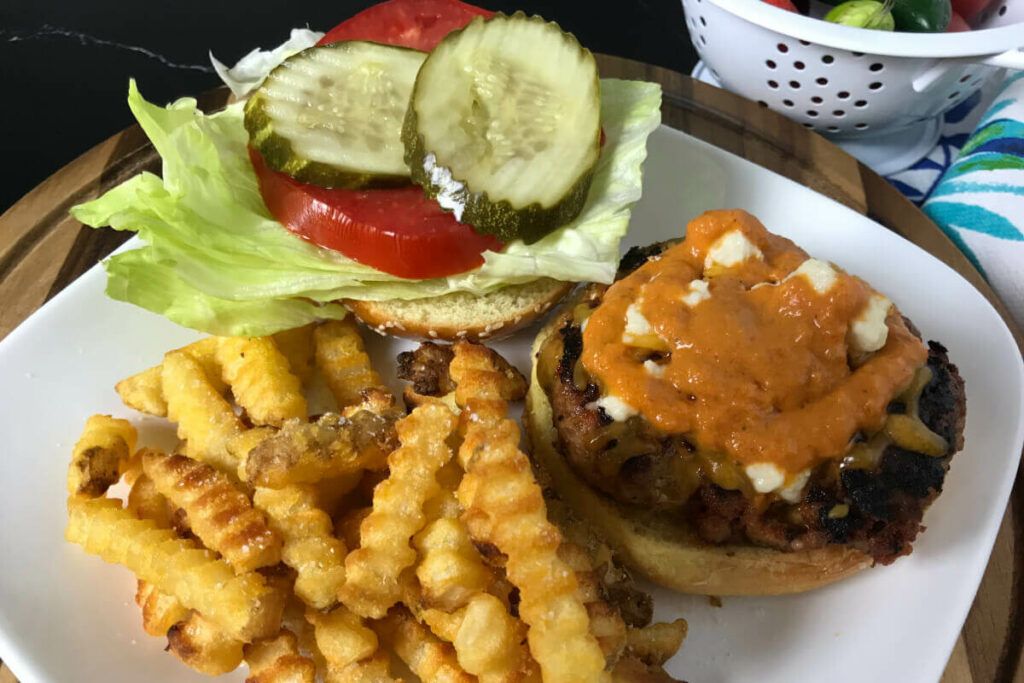

Frequently Asked Questions
While both are tomato-based Mexican sauces, ranchero sauce typically uses fresh jalapeños and has a chunkier texture with distinct pieces of vegetables. Enchilada sauce is usually smoother, often uses dried chiles instead of fresh, and commonly incorporates more dried spices.
Traditional ranchero sauce has a moderate level of spice from jalapeños or other fresh chiles. However, you can easily adjust the heat level by adding more chiles for extra spice or removing seeds and membranes for a milder flavor.
Absolutely! Ranchero sauce actually develops more flavor when made 1-2 days ahead. Store it in the refrigerator for up to a week or freeze for up to three months.
Roasting the vegetables before blending them creates the characteristic smoky flavor of authentic ranchero sauce. Don’t rush this step, as the caramelization adds significant depth to the final product.
Yes, canned tomatoes work well, especially fire-roasted varieties that add smokiness. Use unsalted canned tomatoes for better control over the final seasoning.
Rancheros salsa pairs beautifully with tacos, tostadas, quesadillas, and as a topping for grilled meats. It’s also excellent with eggs, particularly in huevos rancheros.
Adding 1/2 to 1 cup of heavy cream transforms traditional ranchero sauce into a richer, creamier version that works beautifully with enchiladas and as a sauce for grilled chicken.
If your salsa isn’t turning the rich red color expected, it might need to cool completely. When made with warm ingredients, the full color often develops as it cools. Using ripe tomatoes and roasted red peppers also enhances the color.
Absolutely! Ranchero sauce is the signature component of huevos rancheros and works perfectly when making them in taco form. Simply spoon the sauce over fried eggs on corn tortillas and add your favorite toppings.
The term “ranchera” refers to the countryside or ranch-style preparation. Traditional salsa ranchera features roasted ingredients like tomatoes, chiles, and garlic, which were historically cooked over open flames at ranches in northern Mexico.
How to make Rancheros Sauce and Salsa
To get started, pull all your ingredients together. Add the olive oil to a large dutch oven then add the chopped onion and jalapeno and saute until soft – about two minutes. Add the garlic and stir into the mixture. Let cook for about one minute.
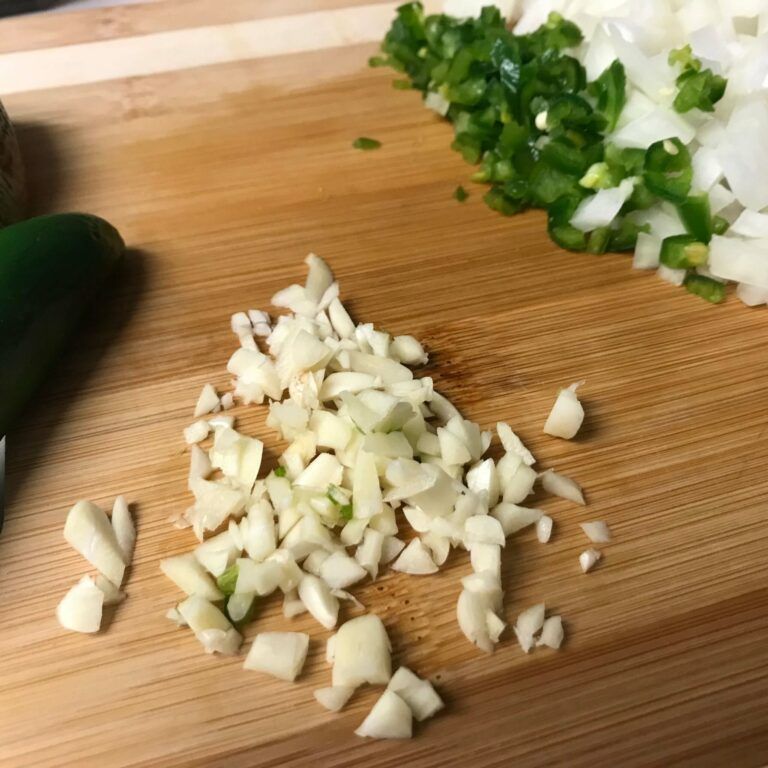
Add the diced tomatoes, bell peppers, chicken broth and all the seasonings including the liquid smoke. Stir everything together and bring to a rapid simmer. Lower the heat and cook for about 15 minutes. Taste and add salt and pepper to taste.
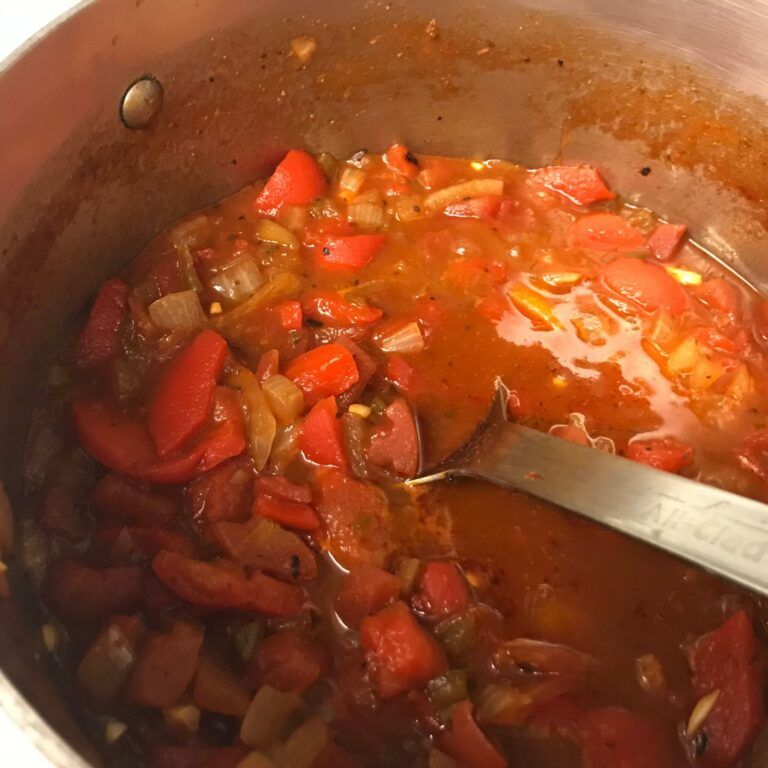
Add the mixture to a blender and blend until smooth. Be careful. The ingredients will still be hot so keep a towel over the top and hold in place to prevent it overflowing.
Alternatively, you can use an immersion blender right in the pot. Use the tool you have.
If you used the blender, return the mixture back to the pot.
NOTE: if you want a rancheros salsa like texture, don’t blend completely. Leave some texture like salsa.
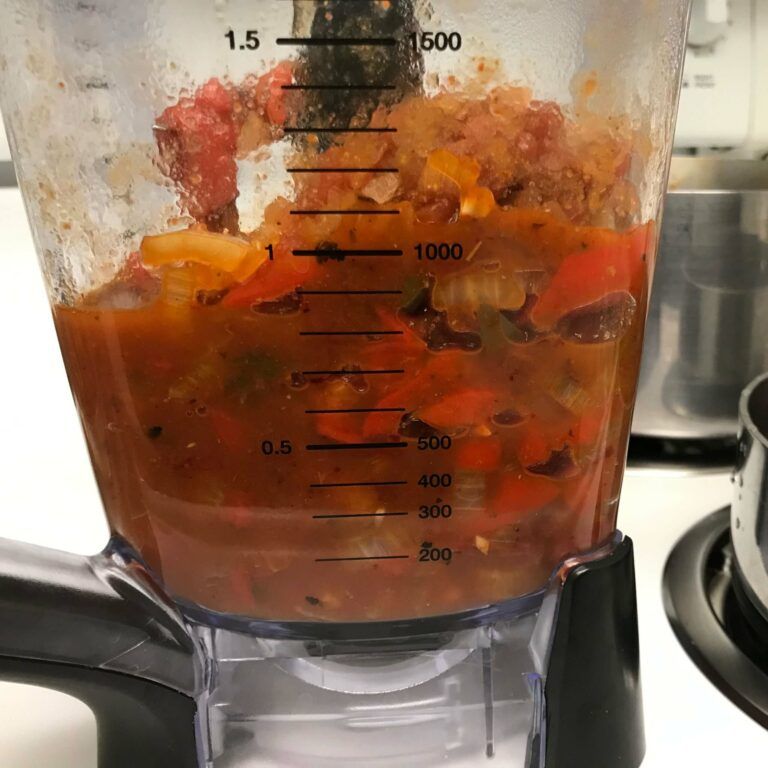
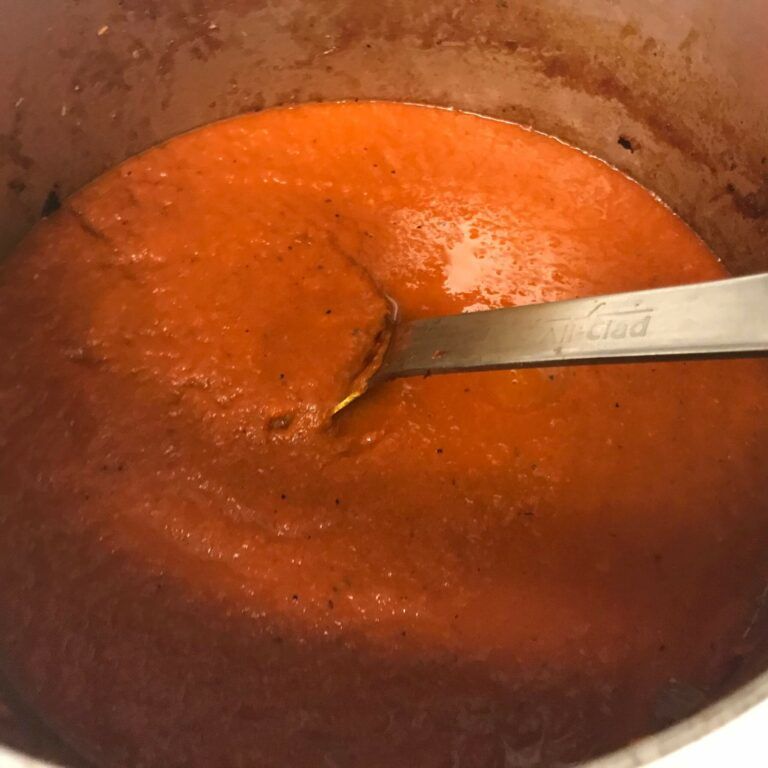
Add 1/2 cup of the cream to the pot. Taste. If it is too spicy for you, add up to another 1/2 cup of cream to mellow out the sauce. As always, taste again and adjust the seasoning.
This will make about 3 1/2 cups and will keep in the refrigerator covered for several days.

Storage Tips
To keep your rancheros salsa or sauce fresh:
- Store in an airtight container or jar in the refrigerator for up to one week
- Freeze for up to 3 months in sealed containers
- Thaw overnight in the refrigerator before using
- If consistency changes after storage, briefly blend or stir before serving

More Favorite Salsas
If you love this ranchero salsa recipe, try one of these flavorful salsa recipes next:
Did you enjoy this recipe? I’d love to hear from you. How did you use it? What recipes did you add it to?
Drop a rating and comment below.
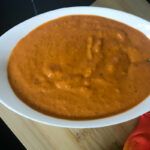
Rancheros Sauce
Nutritional information is only an estimate. The accuracy of the nutritional information for any recipe on this site is not guaranteed.
Ingredients
- 1 Tbsp. Olive oil
- 1 Medium yellow onion chopped
- 1 Jalapeno pepper seeds and veins removed chopped
- 4 Cloves Garlic chopped
- 14.5 Oz. Can diced tomatoes
- 12 Oz. Roasted bell peppers drained and chopped
- 1 Cup Chicken broth
- 1 Tsp. Guajillo powder
- 1 Tsp. Chipotle powder
- 1 Tsp. Mexican oregano regular oregano is fine
- 1 Tsp. Cumin
- 2 Tbsp. Brown sugar
- ¼ Tsp. Liquid Smoke
- 1/2 – 1 Cup Heavy cream
- Salt and pepper to taste
Instructions
- Make the Ranchero sauce. Add the olive oil to a stockpot. When heated, add the onion and jalapeno pepper and sauté until vegetables are soft – about 2 minutes. Add the garlic and stir into the mixture for about one minute.
- Add the diced tomatoes and bell peppers, chicken broth and all the seasonings including the liquid smoke. Stir everything together and bring to a rapid simmer. Lower the heat and cook for about 15 minutes. Taste and add salt and pepper to taste.
- Add the mixture to a blender and blend until smooth. Add back to the pot and add the cream. Start with 1/2 cup of the cream. Taste. If it is too hot for your palette, add up to another 1/2 cup until the spice level is right for you. Stir until warm. Taste again and add more salt and pepper if needed.
- This makes about 3 1/2 cups and will keep in the refrigerator for days.

